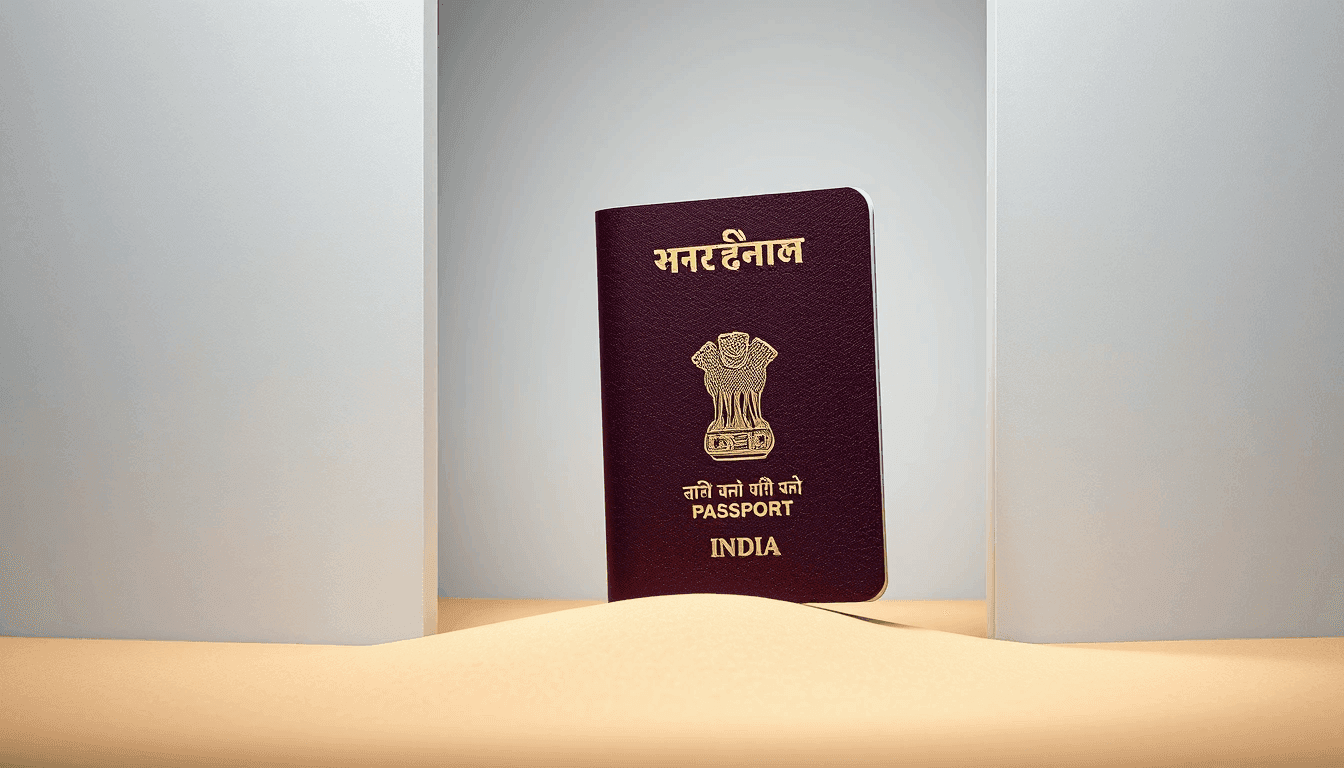

Hey there! If you're an NRI (Non-Resident Indian) living in Dubai and wondering how to tackle your Indian Income Tax Return (ITR) for the Assessment Year (AY) 2025-26 (which covers income earned from April 1, 2024, to March 31, 2025), you're in the right place. This guide will walk you through the process, making it as clear and straightforward as possible, just like I'd explain it to a friend.
Let's dive in!
Do You Even Need to File an ITR in India?
This is the first and most crucial question. As an NRI, your tax liability in India is generally limited to income earned or accrued in India. Your foreign income (like your salary in Dubai) is typically not taxable in India.
You must file an ITR in India if:
- Your total income earned in India (before claiming any deductions) exceeds the basic exemption limit (which is ₹2.5 lakhs for individuals below 60 years for AY 2025-26).
- You have earned capital gains from the sale of assets in India (e.g., property, shares).
- You have income from house property located in India.
- You have received interest income from Indian bank accounts (beyond what's exempt) or fixed deposits.
- You want to claim a refund of Tax Deducted at Source (TDS) that was deducted on your Indian income.
- You want to carry forward losses (e.g., capital losses) to future years.
- You meet certain criteria, such as having deposited ₹1 crore or more in a current account, incurred ₹2 lakhs or more on foreign travel, or paid ₹1 lakh or more in electricity bills in India.
Getting Your Ducks in a Row: Essential Prerequisites
Before you even think about logging into the e-filing portal, make sure you have these essentials:
- Permanent Account Number (PAN): This is your unique 10-digit alphanumeric identifier for tax purposes in India. If you don't have one, apply for it immediately. It's mandatory.
- Residential Status Determination: This isn't just a formality; it dictates what income is taxable for you. For tax purposes, an individual can be:
- Resident and Ordinarily Resident (ROR)
- Resident but Not Ordinarily Resident (RNOR)
- Non-Resident (NR) As an NRI in Dubai, you'll most likely fall under the NR category. However, it's vital to correctly determine this based on your physical presence in India during the Financial Year (FY) 2024-25. Generally, if you've been in India for less than 182 days, you're an NRI.
- Aadhaar Card (Optional but Recommended): While it's not mandatory for NRIs to link their Aadhaar with PAN, having an Aadhaar can simplify some processes, especially for e-verification. If you have one, ensure your contact details (phone, email) are updated.
- Valid Bank Account in India:
- NRO (Non-Resident Ordinary) Account: This is where your Indian-sourced income (like rent, dividends, interest) is typically credited. It's fully repatriable up to a certain limit.
- NRE (Non-Resident External) Account: This account is for your foreign earnings remitted to India. The interest earned on an NRE account is tax-exempt in India. Ensure your bank account is active and linked to your PAN.
- Access to the Income Tax e-filing Portal: You'll need a registered account on the official Income Tax Department e-filing portal. If you haven't registered before, you'll need to do so using your PAN.
Understanding What Income is Taxable for You in India
As an NRI, the income taxable in India typically includes:
- Income from Salary: Only if earned in India or for services rendered in India. Your Dubai salary is not taxable.
- Income from House Property: Rental income from property in India.
- Capital Gains: From the sale of any capital asset located in India (e.g., property, shares, mutual funds).
- Income from Other Sources: This includes interest from NRO accounts, fixed deposits, dividends from Indian companies, and any other income earned from Indian sources.
- Business or Profession Income: If you have any business or professional connections in India.
A quick note on DTAA: India has a Double Taxation Avoidance Agreement (DTAA) with the UAE. This agreement ensures that you don't pay tax on the same income in both countries. While your Dubai salary isn't taxable in India, if you have any income that could potentially be taxed in both India and the UAE (e.g., certain business profits), the DTAA rules would come into play to prevent double taxation. You might need a Tax Residency Certificate (TRC) from the UAE to avail DTAA benefits.
Documents You'll Need to Gather
Get these ready before you start filling out forms:
- Your PAN Card
- Form 16/16A: If you had any salary income or TDS deducted on other income (e.g., rent, interest).
- Bank Statements: For all your Indian bank accounts (NRO, NRE, Savings) for FY 2024-25.
- Interest Certificates: From banks for interest earned on FDs and NRO savings accounts.
- Brokerage Statements/Capital Gains Statements: If you sold shares, mutual funds, or other investments in India.
- Property Sale/Purchase Documents: If you sold or bought property.
- Rent Receipts/Agreement: If you earned rental income from property in India.
- Details of Deductions: Documents for any eligible deductions you want to claim (e.g., life insurance premiums, health insurance premiums, home loan interest if applicable to NRIs).
- Passport: For residential status proof.
The Step-by-Step ITR Filing Process for AY 2025-26
Here's how you'll typically file your ITR:
Step 1: Choose the Correct ITR Form
This is super important for NRIs. Most NRIs cannot use ITR-1 (Sahaj).
- ITR-1 (Sahaj): NOT for NRIs. This form is only for Resident individuals with income from salary, one house property, other sources (interest, etc.), and agricultural income up to ₹5,000.
- ITR-2: This is often the most common form for NRIs. Use it if you have income from salary, more than one house property, capital gains, foreign assets, or agricultural income exceeding ₹5,000.
- ITR-3: For individuals having income from business or profession.
- ITR-4 (Sugam): For Resident individuals, HUFs, and Firms (other than LLP) opting for the presumptive taxation scheme. NOT for NRIs.
Action: Carefully review your income sources and choose the appropriate ITR form.
Step 2: Register/Login to the E-filing Portal
- Go to the official Income Tax Department e-filing portal.
- If you're a new user, click "Register" and follow the steps using your PAN.
- If you're already registered, click "Login" and enter your User ID (PAN), password, and captcha.
Step 3: Access Your Information (Form 26AS, AIS/TIS)
Once logged in:
- Navigate to
e-File > Income Tax Returns > View Form 26AS. This form provides a consolidated statement of taxes deducted/collected at source against your PAN. It's crucial to ensure all TDS shown here matches your records. - Also, check your
Annual Information Statement (AIS)andTaxpayer Information Summary (TIS)under theServicestab. These provide a more comprehensive view of your financial transactions (interest, dividends, mutual fund transactions, etc.) reported to the tax department. This helps in pre-filling and ensuring you haven't missed any income.
Step 4: Prepare Your ITR Online or Offline
You have two main options:
-
Online Mode (Recommended for most NRIs):
- Go to
e-File > Income Tax Returns > File Income Tax Return. - Select the Assessment Year 2025-26.
- Select "Online" as the mode of filing.
- Choose your "Status" as Individual.
- Select the correct ITR Form (e.g., ITR-2).
- Choose the reason for filing (e.g., "Taxable income is more than basic exemption limit").
- Click "Continue."
- You'll then go through various sections: Personal Information, Gross Total Income, Deductions, Tax Paid, Total Tax Liability.
- The portal will often pre-fill some data from your Form 26AS and AIS/TIS. Always verify this pre-filled data carefully against your own documents. Correct any discrepancies.
- Enter all your income details (salary, house property, capital gains, other sources).
- Claim eligible deductions under Chapter VI-A (e.g., Section 80C for specified investments, 80D for health insurance, 80G for donations). Be mindful that some deductions have specific applicability rules for NRIs.
- Calculate your tax liability. The system will do this automatically.
- If there's any tax due, pay it online through
e-Pay Taxbefore submitting the ITR.
- Go to
-
Offline Mode (Using Java Utility/Excel Utility):
- Download the appropriate ITR utility (Java or Excel) for AY 2025-26 from the "Downloads" section of the e-filing portal.
- Fill in all details in the utility.
- Generate an XML file.
- Upload this XML file to the e-filing portal after logging in.
Step 5: Pay Any Outstanding Tax
If, after calculating your tax liability, you find you owe more tax, you must pay it before final submission.
- You can do this through the "e-Pay Tax" option on the portal.
- Select "Income Tax (Challan 280)" and fill in the details.
- Keep the Challan Identification Number (CIN) and payment details handy. You'll need to enter this in your ITR form.
Step 6: Verify Your ITR
This is the final and most critical step. Your ITR filing is incomplete until it's verified. You must verify your return within 30 days of filing.
Here are the common e-verification methods, especially relevant for NRIs:
- Aadhaar OTP: If your Indian mobile number is linked to your Aadhaar. (Less common for NRIs who might not use an Indian number frequently).
- Net Banking: Via your Indian bank account. Most banks offer this service.
- Demat Account: Through your Demat account (if you have one).
- Bank ATM: Generate an EVC (Electronic Verification Code) at specific bank ATMs.
- Sending ITR-V to CPC (Centralized Processing Centre): This is a physical method. You download the ITR-V (Acknowledgement Receipt) after filing, print it, sign it in blue ink, and send it via ordinary post to the CPC in Bengaluru within 30 days. This is often the most reliable method for NRIs who might face issues with other e-verification options.
Action: Choose the method that works best for you and complete the verification promptly. If you choose to send ITR-V, make sure you send it to:
Centralized Processing Centre, Income Tax Department, Bengaluru - 560500, Karnataka.
Important Deadlines for AY 2025-26
For most individual NRIs, the deadline to file your ITR for AY 2025-26 (FY 2024-25) is July 31, 2025.
- If you miss this deadline, you can still file a belated return, but you might incur a late filing fee (up to ₹5,000) and lose the ability to carry forward certain losses.
Common Pitfalls and Practical Tips
- Incorrect Residential Status: This is the biggest mistake. Make sure you correctly determine your residential status based on your physical presence in India. If unsure, consult a tax professional.
- Choosing the Wrong ITR Form: As mentioned, ITR-1 and ITR-4 are generally not for NRIs. Double-check your form selection.
- Missing Income Details: Always cross-verify your bank statements, Form 26AS, and AIS/TIS to ensure all Indian-sourced income is declared.
- Not Verifying Your Return: An unverified return is an invalid return. Set a reminder to complete verification.
- Ignoring DTAA: If you believe your income might be subject to double taxation, understand how the DTAA with UAE can help. You might need to declare your foreign income in the ITR for disclosure purposes, even if it's not taxable.
- Outdated Contact Details: Ensure your email ID and Indian mobile number (if you have one) registered with the e-filing portal are updated. This is how the Income Tax Department will communicate with you.
- Seeking Professional Help: If your tax situation is complex (e.g., multiple income sources, capital gains, DTAA claims), it's always wise to consult a qualified Chartered Accountant (CA) or tax advisor in India. They can help navigate the complexities and ensure compliance.
What Happens After You File?
Once you've filed and verified your ITR:
- You'll receive an email confirmation that your return has been successfully verified.
- The Income Tax Department will process your return.
- If you're due a refund, it will be credited to your validated bank account in India.
- You might receive an intimation notice (
Section 143(1)) from the department, confirming the processing of your return.
Wrapping Up
Filing your ITR from Dubai might seem daunting, but by understanding your obligations, gathering the right documents, and following these steps, you can get it done smoothly. Remember, the key is accurate reporting of your Indian-sourced income and timely verification. Don't hesitate to seek professional guidance if your situation is complex. Good luck!

About Harleen Kaur Bawa
Harleen Kaur Bawa is a licensed immigration attorney specializing in Canadian immigration and Indian services. With extensive experience in family sponsorship, Express Entry, refugee claims, and OCI services, she has successfully helped hundreds of clients navigate complex immigration processes.
Harleen holds degrees from York University - Osgoode Hall Law School and the University of Toronto, and is certified by the Law Society of Ontario and the Immigration Consultants of Canada Regulatory Council. She is committed to providing personalized, professional legal services to help clients achieve their immigration goals.
Related Articles

Renewing Your Indian Passport in UAE Without the Old Passport: A Practical Guide
Lost, stolen, or damaged Indian passport in UAE? Get the essential guide to re-issue. Understand police reports, documents, fees, and timelines for a smooth process.

Your Guide to Child Birth Registration at the Indian Embassy Dubai: A Step-by-Step Process
Simplify newborn Indian passport & birth registration in Dubai for expats. Our guide helps Indian parents navigate documents & avoid pitfalls efficiently.

Fixing OCI Application Photo and Signature Upload Errors in the UAE: Your Practical Guide
Applying for OCI from UAE? Fix common photo & signature upload errors like dimensions, file size & background. Get precise steps to ensure your application isn't rejected.